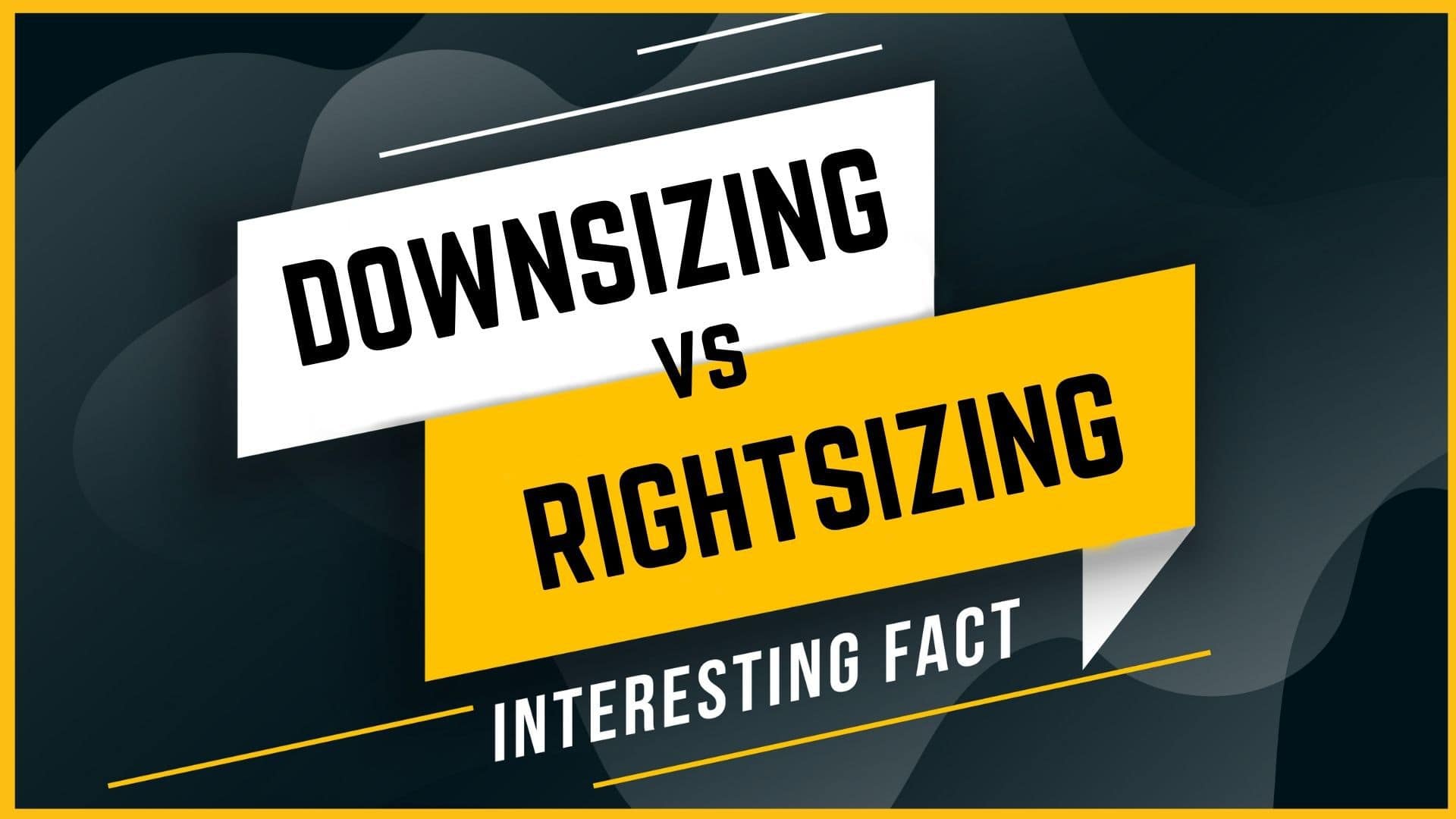Rightsizing is defined as the process of reorganizing and restructuring the existing business by different cost-cutting methods. These methods include, but are not limited to, rearranging the existing employees, reducing the number of employees, reorganizing or reducing upper-level management, and reducing the workforce.
Table of Contents
What is Resizing?
A business faces multiple setbacks over a while. The string of setbacks never ends. There is a cash crunch, payment problems, employee attrition, improper management, political changes, pandemic changes (the recent COVID-19 is the best example of it), and other internal or external changes that may necessitate the companies to adopt rightsizing.
In some cases, even temporary losses will force the companies to adopt rightsizing. While this is compared to downsizing, rightsizing is related to adapting to the present market conditions, which could also mean increasing specific resources. The primary objective of rightsizing is to streamline the business so that the lost or declining profitability can be revived.
Resizing could mean different things for different companies in various industries. For example, for a product-oriented company, rightsizing may mean reducing the sales staff or admin functions, adjusting expenses to balance the costs, etc. but for an IT company, rightsizing would mean reorganizing and restructuring IT infrastructure, database, storage, etc.
Whereas, for a startup, rightsizing would mean increasing the staff and field force to match the demand and supply. It is essential to define what rightsizing is for you instead of only scraping off the competition.
Steps in rightsizing
The initial step in rightsizing is to conduct a detailed analysis of the existing structure of the company. Understanding the current situation is critical because without knowing the current state of things, you would not propose correct reforms, steps, and objectives, or rightsizing. Therefore, conducting a detailed analysis is essential. It will help the organization to understand the purpose of each role.
Also, businesses should know the objective of every role in the company. The first and foremost thing every top management will ask is if every role is being justified in the organization. Every role, every designation is associated with specific objectives that they have to fulfill. Before starting the process of rightsizing, the management will conduct a detailed analysis to understand the role-objective fulfillment ratio.
Then the organization will try to understand if the employee has the required skills and expertise, which is necessary for his job profile. A string of interviews will be conducted, after which they will be given performance ratings.
Rightsizing is also essential for organizations to avoid duplication of work. If two different employees are performing a single work, and if both of them end up doing more or less the same thing, it is a waste of the organization’s resources.
Whenever the process of rightsizing is implemented, the employees may feel uneasy and become uncertain about their role in the organization. This uncertainty may cause some high-performing employees to leave the company, causing further panic amongst the remaining employees. Thus the organization must understand the relation between rightsizing and employee retention.
The best way is to have crystal clear communication with your team and inform them about the process of rightsizing. This is to ensure that there is no miscommunication or assumptions of the employees related to rightsizing.
Audits are widespread when it comes to rightsize. Many companies conduct an audit throughout the organization to see if they have the correct people for the correct role. It is essential to ensure that your HR department is aligned with the strategic decisions of the company. All the departments are expected to be aligned to rightsizing.
Many times rightsizing also involves analyzing the prospects and making necessary changes in the organization accordingly. For example, many organizations understand the importance of artificial intelligence, and hence, they are introducing dedicated departments in their companies.
These changes may not be required immediately, but in the future, they might be vital. Therefore organizations start making provisions for it from now on.
Downsizing vs. Rightsizing
Although both of them seem synonyms of each other are used inadvertently, it is essential to understand that both are different. They have minor similarities, but both use very different methods to reach their goals.
Downsizing is when the organization has more resources than required, and it starts reducing or shedding off the excess weight to get leaner. It is done primarily to increase profitability, which may have affected due to multiple factors. Layoffs are widespread in downsizing.
Rightsizing, on the other hand, is managing the existing employees in the organization. The purpose is to get the right size to handle the hurdles in the market. Getting the right size doesn’t always mean layoffs; in some cases, it means adjusting your existing departments, increasing or decreasing people in certain areas, etc. Like a Rubik’s cube, employee’s are adjusted, moved, and shifted from one department to another so that talent is distributed equally throughout the organization.
This is mostly done to balance every department concerning each other. Reorganizing is the primary goal of rightsizing since the company wants to improve its effectiveness and its performance. Improving effectiveness will help them to reach their goals and enhance profitability.
Downsizing is a panicky situation in which the company reduces the number of employees more often than not. Implementing downsizing means admitting that there is something extra, and it needs to be reduced.
Challenges in rightsizing
Implementing the process of rightsizing is a complicated process since the first step of conveying it to the employees, without creating a panic, is challenging. Amongst other challenges, the following are a few of the significant and common challenges in implementing rightsizing:
Rightsizing may harm the brand image of the organization. It reduces employee morale, and attrition may increase. It makes the selection of new employees challenging and can even hamper sales of the company.
If the existing workforce is not managed well, then the redundant employees usually complain about the company in many online forums and websites. The media quickly picks up the bad news, and like a wildfire, it spreads from one platform to another.
The outcome is the negativity of the organization and the brand in the market. Restarting the business from that point is very challenging.
Conclusion
Rightsizing is very crucial in organizations to streamline performance. It is necessary to improve the productivity of the employees and to distribute talent equally throughout the organization.
While it is a productive process, care should be taken that it does not lead to a demoralizing effect on the employees, resulting in the process’s backfiring.
Liked this post? Check out the complete series on Human resources

